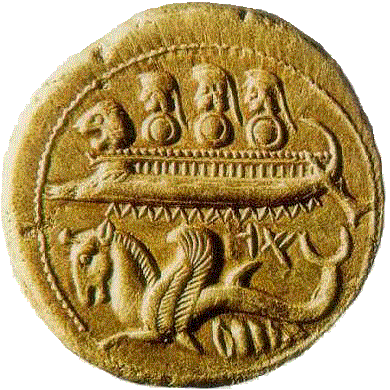
Phoenicians
G - FGC6669
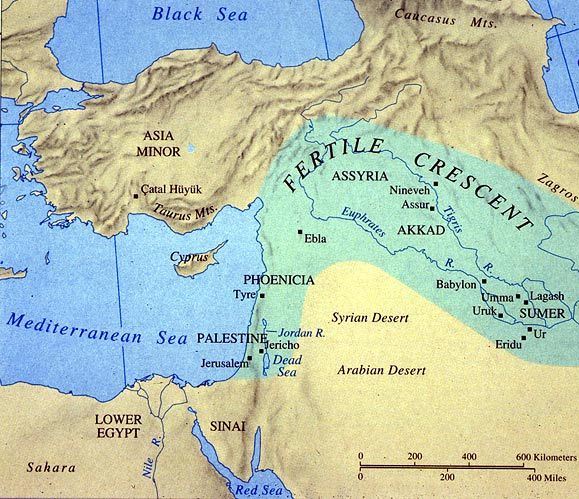
The Fertile Crescent

Phoenicians |
G - FGC6669 |

The Fertile Crescent |
|
* |

|
||||||||||||||
A
|
|
C
|
||||||||||||
G-FGC58189 Formed 2400 BCE

G-FGC59473 Formed 1300 BCE
|
G-Z43083 Formed 1300 BCE
|
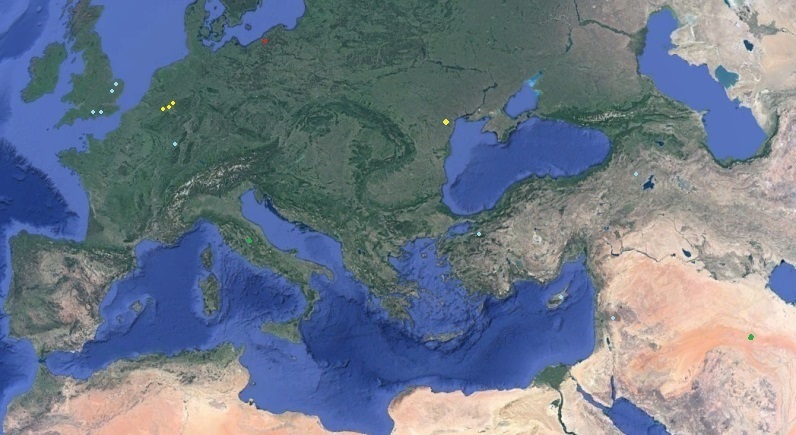
|
|
FGC58131 and M286 blue |
FGC6618 yellow |
G-BY157359 red |
G-Y93879green |
*
|
It is still dark to us how it went. When he stayed in the original region. He was probably an Aegean farmer, an inhabitant of Troy and have fought under Patroclos against the Achaeans. More east was the empire of the Hatti to about 4,000 years ago existed. Their language was akin to the ancient Caucasian languages. Çatalhöyük was in part of the region and was about 185 km south of their capital of Hattusa. Hattusa is around 1700 v. Chr. under the authority of a Hittite dynasty, who a short time before had founded the first Hittite kingdom. |
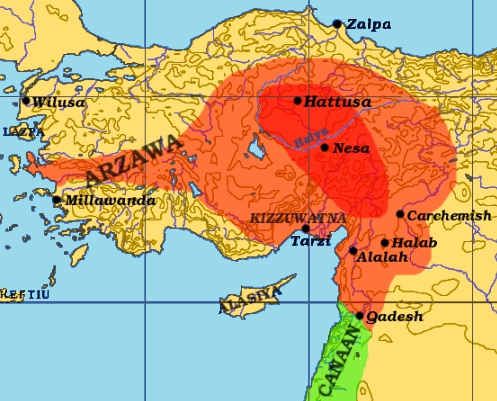
The extensive Hittite Empire (red) replaces around 1290 AC Hatti and borders the Egyptian empire (green) (3) |
|
The empire of the Hittite dynasty existed between about 1700 and 1200 BC. Then the whole eastern Mediterranean was brought in great turmoil by attacks of the Sea People, as they were called in Egyptian papyri. Many cities on the coasts and on islands such as Cyprus, were destroyed or abandoned. The Hittite Empire then split into separate states. (4) In the eleventh century BC. the Phoenicians appear. They inhabit the eastern coastal region of the Levant in the eastern part of the Mediterranean, they were traders and established colonies, first in Cyprus "Alashiya"), then in Sardinia and they sailed past Gibraltar to the Atlantic coasts in Morocco and Portugal, where she won gold, silver and tin and also settled colonies. The most distant colony was, at present Cadiz. 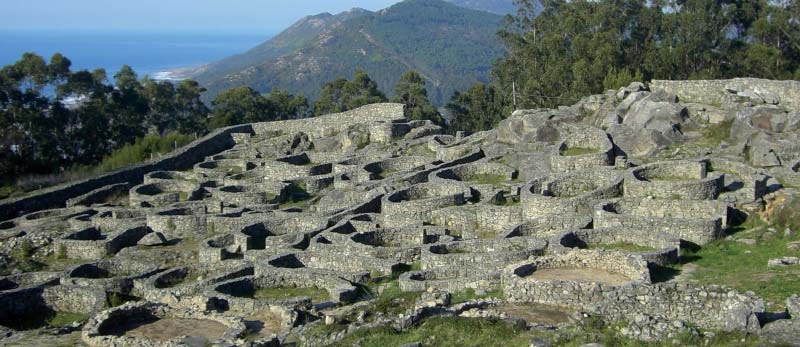
Fort on the hills in Galicia in the northwest of Spain. In Santa Trega on the Spanish-Portuguese border are round stone houses with small cobbled streets and views of the Minho River in Portugal. Here was a fort that gave habitat to 2,500 people. Until now, archaeologists believe it was inhabited for 500 years, about 2,500 years ago , and finally destroyed by the arrival of the Romans. In other words, it provides a clear example of indigenous communities, pre-Roman, iron age. This hillfort has many similarities to those of the UK , including the artistic drawings that many describe as Celtic. But they have also developed their own unique tradition, known throughout Spain as Castro Culture. Among the waste was found pottery of the Phoenician world. (5) * In the story above, I try to describe our walk through history. There are still many scenarios possible. We can descend from the first Neolithic farmers from the southern branch. Our farthest ancestors can come from the Neolithic "Hoguettiens". We may have come later in Roman times and are descendants of a Roman legion soldier. After 25 years of faithful service, they received land, often when it was fertile land, and that was our region, in the places where they had served. The northern boundary of the Roman Empire was from the fourth century until the end, where the language line lies on the Roman road from Cologne to Boulogne sur Mer, across Belgium. Members of our subgroup are now found first in the Levant and in Cyprus, but also in Armenia, Saudi Arabia, Sardinia, on the Löss lands on the ancient Roman northern way through Belgium, and in England Every new find usually shed some more light on our walk through the past. |
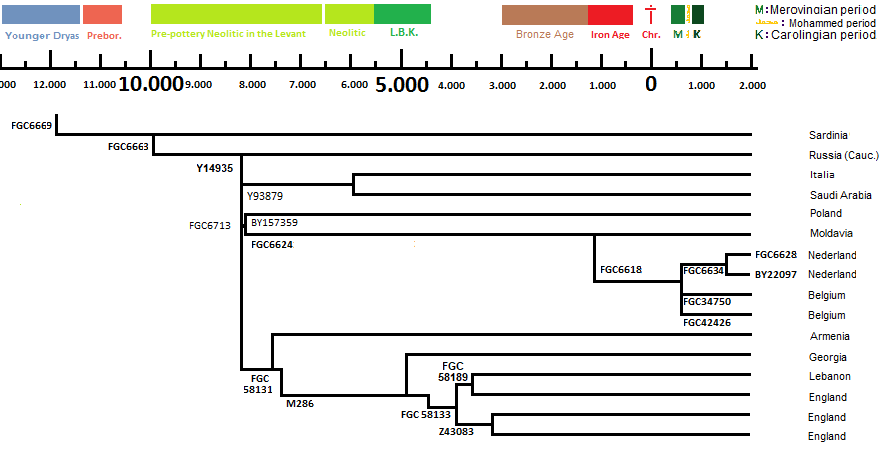
The Timeline of G-FGC6669 |
|
Auteur: Boed Marres, Amsterdam, last edit: |